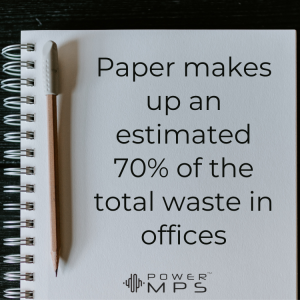Why You Should Consider Different Types of Paper
Today’s economy has most businesses on an active search to save money. But in their quest to cut expenses, some companies may make the mistake of using the wrong paper for their printer or project. However, the type of paper used for printing matters far more than many believe.

Improper printing paper can lead to several problems for a business. The wrong paper for a project could mean something as simple as an unprofessional look. When presenting to clients, paper copies of charts, slides, and proposals must be visually and texturally appealing. If printed materials are miscolored, smudged, or at bargain quality, it could lead to a loss of sale or partnership – and a missed opportunity to expand revenues.
But beyond presentation, using the incorrect paper in a printer can create office inconvenience and even damage expensive machinery. Rollers encountering unnecessary friction from courser papers are more likely to generate paper jams. Long-term exposure to added resistance will lead to increased maintenance and the added costs of replacement rollers.
Similarly, using inkjet paper with a laser printer or vice versa can cause significant problems. Inkjet paper won’t hold up well to the heat of a laser printer, and laser printer paper is not designed to absorb ink. The result is highly likely to cause printer damage.
But how can office managers and IT know what type of papers are needed to produce the correct result? To do this, it is essential to know the different papers available and their typical uses.
Types of Paper Make a Difference in Project and Performance
The final product, when printing, often depends on the type of paper used. For example, using premium glossy paper helps enhance the appearance of a document and make it last longer. Each type of paper has unique features that make them the best for specific purposes. Here is a list of many of the most common papers and their everyday use.
- Bond – Bond paper is a “text weight” paper made with cotton rags. Historically, it was used to print government bonds. Today, it is considered an all-purpose design for brochures, stationery, and other materials that need to hold clear color. Compared to standard multipurpose paper, bond paper is generally more durable.
- Cardstock – Trading cards, flyers, and business cards are all frequently printed on cardstock paper. This paper is exceptionally thick and robust, making it ideal for even paperback book covers.
- Copy – A thinner, budget-friendly option, copy paper is a go-to for many offices. For text-heavy printing and generic copies, copy paper is an excellent choice to save money on print materials. However, its thinner, less durable structure can quickly become highly oversaturated if used for producing images or rich color.
- Recycled – Recycling is not necessarily a specific type of paper but more an aspect available on multiple paper products. Some government agencies or businesses require presentations and proposals to be presented on recycled paper. There is no right or wrong time to choose recycled paper. However, it is often more expensive because it requires additional manufacturing.
- Photo Paper – This paper is best used for printing high-quality images on inkjet printers. It usually comes in a glossy or matte finish. Glossy finishes are generally the least expensive and most common. However, a matte finish will diminish reflective qualities and potential fingerprint smudges.
Why Should Businesses Care about the Type of Paper Used for Printing?
Different types of paper can add to or diminish the effectiveness of individual projects. Inkjet versus laser printer paper is one of the best examples. One is specifically designed to produce vibrant images. The other is created for speed, efficiency, and heat resistance.
Bond paper is an excellent resource for business presentations and client materials. But vellum, a type of bond paper, wouldn’t be a good fit due to its semi-transparency. Modern vellum is also treated with plastic, making it ideal for decorative projects than a business setting.
Ultimately, offices must choose their types of paper based on everyday office needs. For example, some companies will require higher-quality presentation-style materials. Still, others are more likely to require plain copy paper for fast and efficient printing and internal use. But businesses that leverage sales and marketing should avoid cutting printing budgets too drastically when creating materials for current and potential clients.
Paper Quality Requirements are Highly Dependent on End Goals
Most items printed in the office setting last less than a day. Memos, emails, and other standard office items don’t usually require much more than inexpensive copy paper. Why waste money when most printed materials end up in recycling?
However, items like legal documents or other printed materials for long-term files require paper that will stand the test of time. Higher-quality papers with thicker weaves will hold ink and toner better and are less likely to deteriorate over time. Bond papers, for instance, can be purchased in weights and textures built to withstand the test of time and travel, whereas copy and multipurpose paper may prove less durable.
When deciding where to cut printer paper budgets, it’s crucial to remember the types of printers and printing the business uses. Fortunately, experienced office printing partners can help monitor and evaluate printer use and requirements to help companies to make better print budgeting decisions. In addition, consulting with a managed print services or printer maintenance company can provide much-needed insight into the types of printer papers and materials available to help save money without damaging printers, disappointing clients, or otherwise impacting office efficiency.


Comments (1)